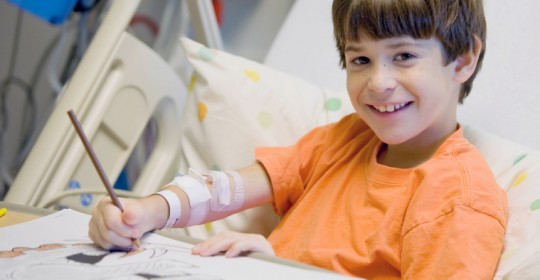
What is Hirschsprung’s disease?
Hirschsprung’s disease is a congenital (present at birth) disease of the large intestine in which there is an absence of special nerve cells – called ganglion cells – that affect the muscles in the intestine. In healthy people, these muscles contract to push stool to the anus, where it leaves the body. People with Hirschsprung’s disease, however, cannot move their bowels normally, leading to constipation. If Hirschsprung’s disease is not treated, stool can back up in the large intestine, which can lead to serious problems such as infection and bursting of the intestine.
How is Hirschsprung’s disease treated?
Options for treating Hirschsprung’s disease include:
- Ostomy – During this procedure, the surgeon removes part of the diseased intestine. The surgeon then cuts a small hole in the abdomen, called a stoma, through which stool can leave the body. A special ostomy bag is placed around the stoma to collect the stool. This procedure is temporary, and is often used until the child is well enough for surgery. In some cases, the child might respond to conservative treatment with enemas to stimulate bowel movements. This approach makes the ostomy procedure unnecessary while the child is getting well enough for surgery.
- Surgery – The definitive surgery for Hirschsprung’s disease involves removing the part of the large intestine without ganglion cells and replacing it with part of the large intestine that has the normal number of cells. This will allow proper bowel movements. This surgery is called pull-through surgery.
The standard surgical approach usually entails the formation of a stoma and then the subsequent one or two operations to perform the pull-through.
A newer alternative is treating the child conservatively and subsequently performing a one-stage pull-through procedure with laparoscopic assistance. For this procedure, the level at which the normal functioning bowel occurs is determined at the time of the operation with the assistance of gastrointestinal (GI) pathologists, doctors who studies cells and tissues to identify diseases and help with diagnosis.
What happens after surgery?
After surgery, the child is treated with IV antibiotics while waiting for the return of bowel function. This usually occurs three to five days after surgery.
When will my child be able to go home after surgery?
Discharge is usually within five to seven days after the procedure.
What should I expect after discharge?
After discharge, you can expect your child to have frequent bowel movements. This will require intensive local care and cleansing of the perineal area to avoid significant irritation and skin breakdown.
When should I call the surgeon?
Call the surgeon immediately if any of the following occurs:
- Nausea or vomiting
- Abdominal distention (expanded or swollen)
- Failure to pass stool
- Fever
When will we have a follow-up office appointment?
The first follow-up appointment is usually scheduled for two weeks after discharge. Subsequent follow-up appointments are done on a regular basis from several months to years to be sure your child maintains normal and healthy bowel function.
What is the outlook for people with Hirschsprung’s disease?
Surgical treatment is curative and has a 95 percent to 97 percent long-term success rate. A patient usually goes on to have normal bowel habits as an adult.
Leave a reply

